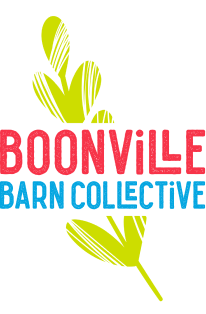If you're just joining us, we're spending the month of February eating and learning about the different beans we grow here on our farm. Last week we covered the Zolfini bean, a Tuscan white bean of industrial food system resistance. We're now fully sold out of Zolfini beans (thanks! and sorry!)
This week we're eating Southwest Gold Beans, a new old bean.
If you want to cook along with us the rest of the month, you'll need to also purchase Tan Tepary, Brown Tepary, and Anazape beans for the remaining 2 weeks. And if you’ve got beans in your pantry, it's a great time to rip open the bags and start cooking them! If you choose to join me in Bean Month, please send me messages about what you're cooking and what you think of the recipes/beans. We really do love hearing from you.
Need a refresher on how to cook dry beans? We've got you covered.
Developing and Sourcing Bean Seed
In 2022, I was asked to speak on a panel about growing beans at the Community Alliance with Family Farmers Small Farms Conference. I felt incredibly unqualified to be on this panel with farmers who had been growing beans for decades as well as a PhD student who was engaged in research to develop improved varieties of heirloom beans. I offered what I could but walked away with an incredibly valuable contact - Mike Reeske (we’ll get to Mike in a minute).
The UC Davis PhD student was Travis Parker, who conducted research at the UC Davis Plant Breeding Center to cross heirloom bean varieties with more common bean varieties that had better yields and were resilient to Bean common mosaic virus (a virus that doesn’t have a cure aside from breeding for genetic resistance). His work resulted in new bean varieties that were more resource efficient than their heirloom counterparts. Here’s an excerpt from UC Davis about the study:
Breeders worked with organic growers to choose heirloom and traditional bean varieties that had excellent flavor and aesthetics but are somewhat uncommon because they don’t always perform well in the field. Breeders cross-pollinated traditional and heirloom varieties and carefully selected the best characteristics of both groups.
The beans were grown in three locations over two years and produced between 19 to 60 percent higher yields on average than the varieties they were bred from. The six varieties were faster to mature than their heirloom parents and all were free from bean common mosaic virus infection.
“The higher productivity in the new bean varieties means that less land, water, fertilizer and other inputs are required to grow them,” said Parker. “Furthermore, all of our field trials were conducted on organic farms, so these new varieties are uniquely suited to those conditions."
Mike Reeske (from the panel) was one of the farmers that participated in the field trials. Since retiring as a science teacher, he has become one of California's stewards of heirloom bean varieties, working to find, save, and produce seeds of beautiful and delicious beans you can’t get anywhere else on his farm called Rio Del Rey in San Diego County.
I connected with Mike after the panel to inquire about purchasing some of the improved bean varieties he had grown out. From Mike, we received the UC improved varieties of Southwest Gold and Tigers Eye. Mike’s expertise in small to mid scale bean production also led us to purchase the bean thresher we have from Turkey. We are incredibly grateful to him for being a source for seed and knowledge in the bean producing scene.
The Southwest Gold Bean: The New Old Bean
The UC-Southwest Gold bean was bred from heirloom Zuni Gold beans and high-yielding/mosaic virus resistant bean. The Zuni Gold bean, also known as the Four Corners bean, comes from the Zuni Pueblo people in Colorado, Utah, Arizona, and New Mexico. The bean has been cultivated for over 1,000 years - what a history!
It is historically part of the Zuni Three Sisters growing system where beans, corn, and squash are grown together in a way to have corn stalks be a trellis for the beans, squash plants offer shade to outcompete weeds growing on the soil surface, and beans fixing nitrogen in the soil to help all plants grow. The beans are also renowned for being able to uptake spicy flavors of the southwest, making them a perfect compliment crop for our chiles (Fondazione Slow Food). They have a rich and meaty flavor and tend to hold their shape during the cooking process.
The improved Southwest Gold variety from UC Davis is resistant to bean common mosaic virus and has a yield 47-60% higher than the Zuni Gold. 47-60%!! That is an incredible production increase for a small farm growing beans. It only makes sense to take advantage of it!
And while it isn’t a commodity bean, if you start looking at other small to medium bean producing farms, a lot of us are growing it. And we should be! For the past 2 years, the Southwest Gold bean has been the variety we’ve ended up with the most pounds of at the end of the year. It’s a beautiful bean whose parent plant has been cultivated for a millennium in the Four Corners region, and is much more interesting to me than any pinto bean out there.
We grew this bush bean in 2 locations last year and its high yield helps us average out the work/cost it takes to grow some of the other more finicky, lesser producing pole beans we have (Sorana & Tolosa). And equally important: it tastes delicious.
Recipes for the Week: What to cook with Southwest Gold Beans
Again, I've got one pound of Southwest Gold beans cooking on the stove to make these recipes for the week. I'm starting with the veggie burgers and then will use the remaining cooked beans for the rest of the recipes, cutting a recipe in half if need be.
If you are new to cooking dry beans, you can find my method here on our site.
If these recipes don't appeal to you, I think Southwest Gold beans can be used in any recipe that calls for pinto beans or many white bean recipes too. If you've got a favorite way to use these beans, send me a message!
Carrot and White Bean Burgers from Smitten Kitchen: I love a good veggie burger and since I can’t eat soy, I have to be pretty careful around which ones I eat. I think this Smitten Kitchen recipe for Carrot and White Bean Burgers will be a perfect option for the Southwest Gold beans. I’m making them tonight and think the sweetness of the carrot will play nicely with the flavors of this bean.
Quick Lunch - Tuna and Bean Salad: I found this recipe for Tuna and Bean Salad from Serious Eats and then got Clare Langan’s recipe for Samin Nosrat’s Favorite Tuna Salad in my inbox the next day. Tuna and beans seem like a perfect combo but I wanted a bit more in the SE option. I asked Clare what she thought of combining the two into a lunch with some toast. Clare recommends omitting the mayo in her recipe if you want to add beans to it. I’m going to make a mashup of the 2 salads for lunch all week to eat at my desk.
Chili: Southwest Gold Beans are my go-to beans for chili. I grew up eating chili once a week in the winter, but it was generally made with a mix of canned black, kidney, and navy beans. I can make chili off the top of my head (general ingredients being ground beef, beans, tomato, peppers, onion, cumin, coriander, chile powders, etc) and I've found that a chili recipe is a pretty personal thing. Everyone has a different way to make it and some are definitely better than others. One thing I don’t skimp on with chili is toppings (cheese! Sour cream! Chips! Pickled jalapenos! Sometimes small pasta!) Here’s a variety of chili options.
Try our White Bean Chili (which works totally fine with these beans). Another chicken chili that I love is from Julia Turshen’s cookbook Simply Julia (The recipe is Green Chile Braised Chicken Thighs with Pinto Beans if you have the book). Here’s a blog post she wrote about the recipe. Its basically a “sear chicken thighs in a pot, add beans, diced canned tomato, green chiles, and braise until you can pull the chicken apart” kind of recipe. You can use it for tacos, enchiladas, or eat it right out of the bowl with chips. My friend Lindsay just went to a chili cook off last week where the winner cooked America’s Test Kitchen’s recipe for chili. The recipe is behind a paywall on their website but you can get it here on someone’s blog.
Sweet Potato Salad with Pepita Dressing: I made this Roasted Sweet Potato with Pepita Dressing a few months ago and really enjoyed it. While I made it with Tolosa beans (honestly mostly for the color contrast and the color of the bean pictured in the recipe), it would work great with the Southwest Gold beans too. When it's rainy and cold out, I'm down for a warm salad.
A Note on Agriculture Policy: It is important to note that part of UC Davis' bean research was funded with a grant from Western SARE (Sustainable Agriculture Research and Education). SARE works to financially support farmer-driven innovations in agriculture that improve profitability, stewardship and quality of life. It is an important source of funding for farmers and agriculture researchers from the USDA’s National Institute for Food and Agriculture whose budget last week was potentially cut by $45 million. This is the same program that funded plans we used for the bike-powered bean thresher we used to clean our beans with. In 2024, Western SARE funded 82 different projects for a total of $7.7 million. USDA programs like this are incredibly valuable to farmers across the country. Uninterrupted funding to the USDA is critical not only to farmers, but to everyday folks in the US who use SNAP benefits to purchase food.



